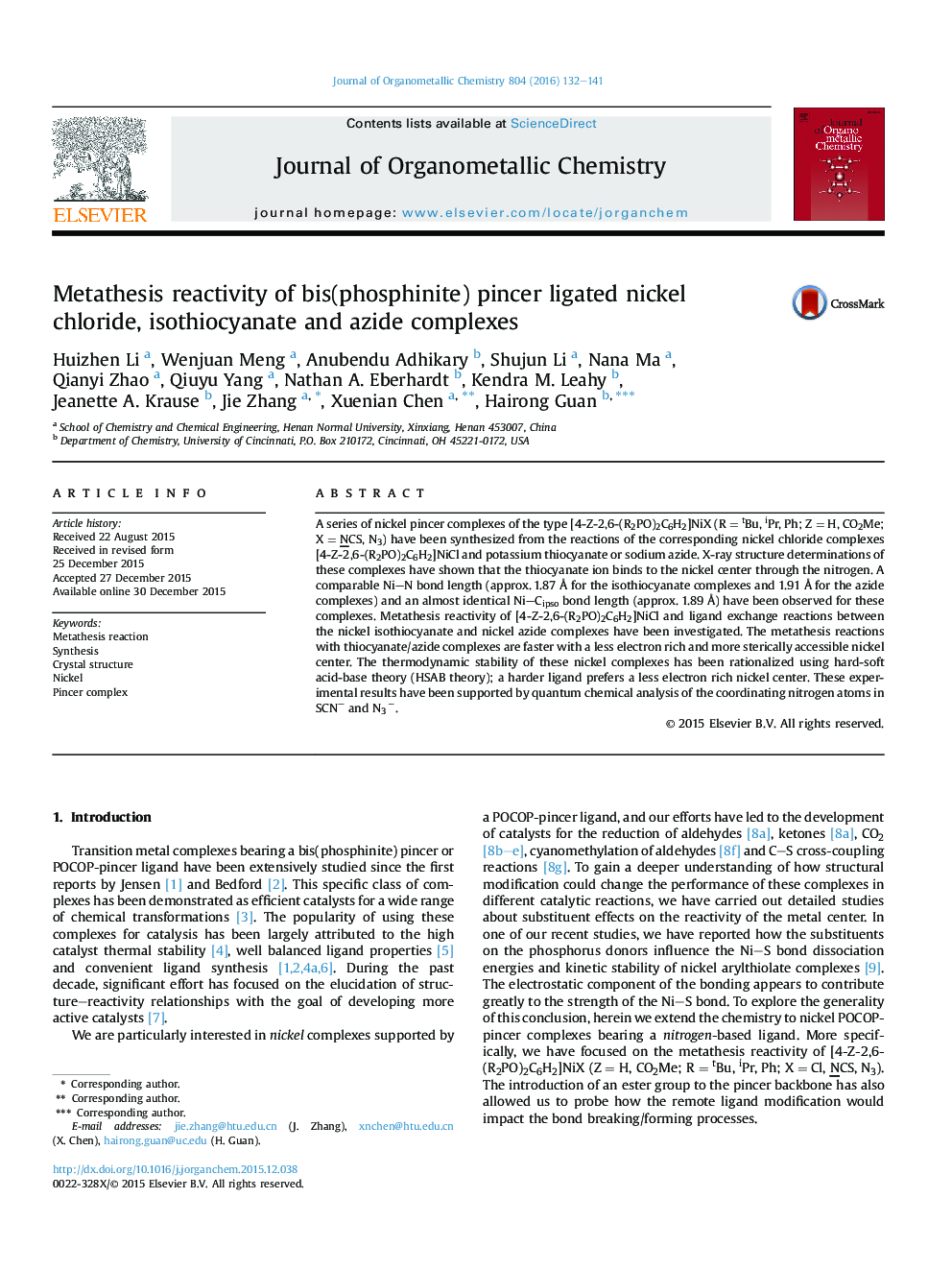| Article ID | Journal | Published Year | Pages | File Type |
|---|---|---|---|---|
| 1323113 | Journal of Organometallic Chemistry | 2016 | 10 Pages |
•A dozen new POCOP pincer nickel isothiocyanate and azide complexes were synthesized.•Metathesis reactivity and ligand exchange reactions of these complexes were studied.•The metathesis reaction is faster with a less electron rich nickel center.•In competing with NCS−, N3−N3− prefers a less electron rich nickel center.•The experimental results were supported by DFT calculations and the HSAB theory.
A series of nickel pincer complexes of the type [4-Z-2,6-(R2PO)2C6H2]NiX (R = tBu, iPr, Ph; Z = H, CO2Me; X = NCS, N3) have been synthesized from the reactions of the corresponding nickel chloride complexes [4-Z-2,6-(R2PO)2C6H2]NiCl and potassium thiocyanate or sodium azide. X-ray structure determinations of these complexes have shown that the thiocyanate ion binds to the nickel center through the nitrogen. A comparable Ni–N bond length (approx. 1.87 Å for the isothiocyanate complexes and 1.91 Å for the azide complexes) and an almost identical Ni–Cipso bond length (approx. 1.89 Å) have been observed for these complexes. Metathesis reactivity of [4-Z-2,6-(R2PO)2C6H2]NiCl and ligand exchange reactions between the nickel isothiocyanate and nickel azide complexes have been investigated. The metathesis reactions with thiocyanate/azide complexes are faster with a less electron rich and more sterically accessible nickel center. The thermodynamic stability of these nickel complexes has been rationalized using hard-soft acid-base theory (HSAB theory); a harder ligand prefers a less electron rich nickel center. These experimental results have been supported by quantum chemical analysis of the coordinating nitrogen atoms in SCN– and N3−N3−.
Graphical abstractFigure optionsDownload full-size imageDownload as PowerPoint slide
